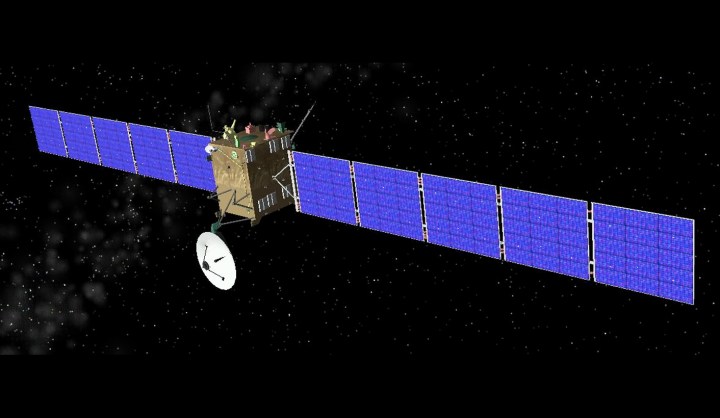World
Robotic probe to awaken for comet rendezvous & landing

After a 10-year journey, Europe's Rosetta spacecraft is due to end its hibernation on Monday and prepare for an unprecedented mission to orbit a comet and dispatch a lander to the surface. By Irene Klotz.
Rosetta’s on-board alarm clock is due to go off at 5 a.m. EST (1000 GMT), but it will take the spacecraft about seven hours to warm up its star tracking navigation gear, fire up rocket thrusters to slow its spin, turn on its transmitter and beam a message back to Earth, the European Space Agency said in a status report posted on its website.
The probe, presently located about 500 million miles (about 800 million km) from Earth and just shy of Jupiter’s orbit, is so far away that its radio transmissions, traveling at the speed of light, will take 45 minutes to reach listening stations in California and Australia.
Ground control teams hope to have confirmation of Rosetta’s resuscitation by 1:30 p.m. EST (1830 GMT), the European Space Agency said.
The spacecraft, which carries a 220-pound (100 kg) lander called Philae, has been hibernating for most of the past three years to save power. It is due to reach a 2.4-mile (4 km) diameter comet called 67P/Churyumov-Gerasimenko in August.
Unlike previous comet probes, Rosetta won’t just sail by. The spacecraft is designed to put itself into orbit around 67P for more than a year of close-up studies.
Watch Roseta video: http://sci.esa.int/rosetta/52838-twelve-year-journey-in-space/
Comets are believed to be the pristine leftover remains from the formation of the solar system some 4.6 billion years ago. Scientists hope the mission will provide more clues about how the solar system came into existence, much like the Rosetta Stone, for which the spacecraft is named, provided a blueprint for deciphering ancient Egyptian hieroglyphs.
“Rosetta should become a key element for our understanding of the history of the solar system,” Stephan Ulamec, a Rosetta project manager, said in an interview with Reuters last month.
One of Rosetta’s first tasks will be to scout for a suitable landing location for its piggyback-riding Philae probe. Scientists are particularly keen to conduct organic chemistry experiments on samples drilled out from inside the comet’s body.
“It would be really interesting to find out whether the organic chemistry that is relevant for life is there on comets,” Ulamec said.
Engineers who designed the lander did not know what type of terrain they would find on the comet’s surface. It is outfitted with twin harpoons laced with tethers that will be fired into the comet’s surface to anchor Philae and keep it from bouncing back into space after touchdown.
Europe spent about 1 billion euros ($1.35 billion) on the mission, which is due to run at least until the end of 2015. DM
Photo: Roseta Spacecraft (Wikimedia Commons)

















 Become an Insider
Become an Insider